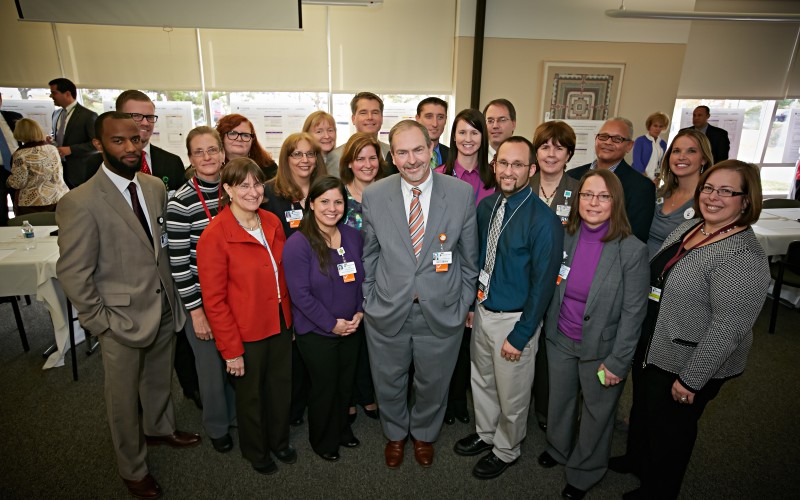Lean Six Sigma Green Belts poised to lead organizational change

The first group of graduates of a program that teaches employees to dive deep into approaches that improve patient care and create more coordinated systems of care received certification last fall as Christiana Care Health System’s first Lean Six Sigma Green Belts.
Christiana Care President and CEO Robert J. Laskowski, M.D., MBA, said the Green Belt program represents “a big step in the direction of tangibly becoming a learning organization. That means folks who are not only interested, talented and passionate about what they do, but who also possess tools that help them analyze and improve what they do.’’
Lean Six Sigma, a customer-focused model of performance improvement that results in the elimination of waste and error rates, has a positive effect on efficiency, effectiveness and affordability of health care by changing health care delivery systems and clinical practices and improving patient outcomes, said Vernon Alders, MBA, MSW, corporate director of Organizational Excellence at Christiana Care and director of the Center for Organizational Excellence at Christiana Care’s Value Institute.
“The concept of value is grounded in The Christiana Care Way, in serving the needs of our neighbors as they perceive them,’’ Alders said. Organizational Excellence (formerly Operational Excellence) promotes the development and adoption of innovations that improve the overall performance of a department by reducing overuse and waste and improving quality and safety.
Sponsored in partnership with the Juran Institute, an internationally recognized quality management company, Lean Six Sigma demonstrates that by tackling problems with a set of proven tools in a defined series of steps, managers and employees can accurately identify root causes and design data-driven solutions to improve and sustain them.
“It’s a wonderful opportunity for us to grow our capacity in problem-solving as an organization,’’ said June Estock, MSN, RN, CPHQ, LBB, a senior consultant in Organizational Excellence. Estock is an expert in both Lean and Six Sigma qualified to lead, coach and mentor Green Belts.
The Green Belts’ projects can be expanded to benefit the whole system, Estock said. “The beauty of this program is that we get to the root of problems. We want to be sure that when expending these resources to solve them, it’s a worthwhile and meaningful investment.”
The five-step DMAIC process — define, measure, analyze, improve and control — can be applied to almost any kind of problem. The first Green Belts at Christiana Care, under the guidance of senior leaders who serve as mentors, completed 14 projects, including finding ways to reduce food waste, shortening length of hospital stays for patients with chronic obstructive pulmonary disease, and streamlining the time required to assign medical equipment work orders.
Through the Lean Six Sigma process, “simple solutions emerge from … understanding the root cause of the problems,’’ said Michael Eppehimer, MHSA, vice president, Department of Medicine, and a Green Belt champion. “So, it looks like an easy solution, but if it had been easy, it would have been done already. These problems require a deeper look.’’
Participants devoted 25 percent of their work time to the projects over six to eight months. “Our vision is to have hundreds who are educated, and once their initial education is completed, they will continue to work on organizational excellence over time,’’ he said.
Protected time for ongoing project work is essential, Alders said. “Nobody ever became an expert by doing something once.’’
The Lean Six Sigma method promotes the belief that an analytical approach will improve care. “There is discipline that goes along with that, but also an expectation that you can back the proposed solution with data,” Dr. Laskowski said.
“Health care delivery in America is transforming, and it’s incumbent on us at Christiana Care to be at the forefront of these changes,” he said. “Ours is a culture that needs to continue to evolve in a dynamic of societal change.’’
A second Green Belt class with 29 participants already has begun.